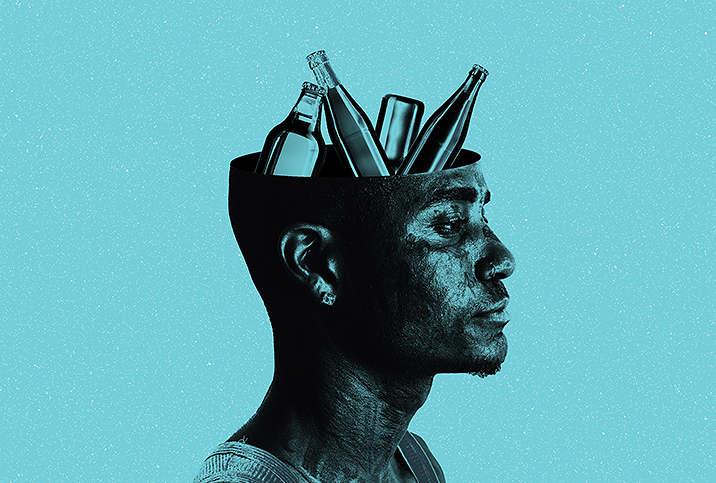Let's Have an Intervention: Part I

Have you ever watched reality shows where people stage interventions, perhaps for a celebrity you haven't heard from for a while? The long-running A&E series "Intervention," which first aired in 2005, has now broadcast 333 episodes.
You probably correctly associate interventions with people suffering from alcohol or drug addiction. However, the same strategies, in perhaps less urgent and immediate circumstances, can apply to broken relationships, sex addiction or even a colleague who's having an onerous time in the workplace. You may find yourself in many situations where an intervention of some kind is required. Love and support are important, but so is a plan.
If you're standing by watching a loved one suffer, it can be challenging to know what to do and how to help. Sometimes you feel as if you've tried everything and don't know where to turn. At that point, you may entertain the idea of staging your own intervention.
Unlike the A&E show, this is not entertainment, so we asked experts for the intervention basics and how to get them right.
Intervention, by definition
Thomas J. Jameson, a licensed therapist and the clinical director of the Ohana Addiction Treatment Center in Hawaii, explained that an intervention is a process planned by the family or friends of a person with drug or alcohol addiction. This condition is also known as a substance use disorder.
Dee Johnson, a senior accredited counselor and addiction therapist for the Priory Hospital Chelmsford in the United Kingdom, expanded on this definition: An addiction intervention refers to an individual's family or friends taking proactive steps to encourage and persuade the individual to enter treatment for their addiction issues.
"Interventions are usually made when the individual with addiction problems is unwilling to seek help themselves or refuses to recognize that they have a serious problem," Johnson explained. "During an intervention, loved ones gather together and confront the person about their substance abuse."
You can conduct an intervention with the help of an addiction professional, she added.
"The intent of an intervention is to make a collaborative effort getting their loved one the help they know they need," she continued. "When a person is suffering from an addiction, they are quite likely to be in denial about their dependence and are unlikely to seek help voluntarily."
"It will also include the recommended next steps, such as the treatment and the consequences—or boundaries—if the plan presented is not followed," added Beau Nelson, D.B.H., L.C.S.W., the chief clinical officer of FHE Health, based in Deerfield Beach, Florida.
Three common types of intervention
According to Nelson, different models can be employed, but the basic elements of organizing an intervention should include the following:
- Plan the intervention ahead of time.
- Contact people who need to be involved or could be useful in the intervention and confirm their agreement to appear in person or via written communication.
- Decide on the plan and then have everyone agree on the strategy.
- Build consensus, making sure that everyone involved is in alignment with the facts that will be presented, as well as the consequences to be enforced as a result of the intervention.
"There can be other steps and variations, but this is a general idea," Nelson said.
Planning is essential for an intervention to work as a poorly planned intervention can sometimes worsen the situation. Most interventions fall into one of three types:
The Johnson model
This approach to intervention was first suggested in the 1970s by Vernon Johnson, an Episcopal priest who made sobriety his life's work. The Johnson model involves preplanned gatherings arranged by friends or family, making them a group effort. Participants can start by writing letters to the person suffering from addiction issues, describing in detail past examples of how their behavior and actions have affected their lives and relationships. Each letter is read out loud during the intervention.
Whether speaking or writing, delivering a calm explanation of the effects and realities of the subject's behavior and the damage their addiction is causing is important because it means the people affected cannot hide behind enabling, making excuses or their own fears anymore.
However, it must be said that motivating the person to make positive changes to improve their life can backfire by consuming them with even more guilt and shame, which gives them more internal permission to use substances.
Motivation should focus on self-respect, self-care, doing small actions one step at a time, and looking at a hopeful future without self-harm. The hope is these actions will lead to acceptance of treatment for their addiction problems, seeing they have support and not being shamed for their behaviors.
The systemic family approach
This is a family-focused intervention strategy that works on changing the family dynamic to appropriately discourage the individual from continuing their destructive behavior and commits all involved to be part of the recovery process. This includes everyone's commitment to therapy sessions, group support meetings and psychoeducation around the issues at hand.
The whole family discusses the impact of the addiction together. Addictive behavior can cause tension, suspicion or anger for all family members, so everybody has been harmed in some manner; hence, the importance of having everyone actively participate in the healing process.
The ARISE model
ARISE—which stands for a relational intervention sequence of engagement—is a model of intervention that happens in three parts and focuses on family healing:
- Meetings with an addiction or substance use disorder professional: a therapist, professional interventionist, psychiatrist or psychologist. The person with the addiction is invited but isn't obliged to attend, so be prepared for their absence. Regardless, the family has the chance to discuss the addiction, its effects, treatment options and the importance of the correct treatment.
- The family can move forward if the individual agrees to treatment. The family can also work to stop enabling their loved one and learn how to support them. This may be necessary at first if the person concerned is in denial. As you learn not to enable the addictive behavior, the process of change can begin to happen.
- Once the subject completes a treatment program, the family can then concentrate on the recovery process, their lifestyle, relationships, work and more. This phase is then ongoing as they continue the healing and recovery process.
By concentrating on everyone affected by the addiction, the ARISE model motivates everyone to change and support the individual overcoming addiction.
Regardless of the model, Jameson recommended staging an intervention with the help of a substance use disorder counselor or professional.
"Ideally, the person will agree to substance abuse treatment following the intervention," he explained. "A substance abuse professional can help make the transition."
Is an intervention constructive?
"There is not much research indicating whether this is effective or not," Nelson noted. "However, anecdotally, we know that interventions can be useful and may be a success even if the person with the substance abuse disorder does not follow the plan."
He explained that an intervention is useful in bringing family and friends together to set boundaries and do something about a very real problem. They may be successful at setting limits in a situation where destructive behaviors affect the addicted person's family and friends.
"It may also be a step that contributes, in the end, to a positive outcome, and that in itself can be helpful," Nelson said.
"When someone is watching their loved one systematically destroy themselves and everything around them, it is a frightening and frustrating place to be in," Johnson said, adding that if previous attempts to discuss a person's addiction have ended in arguments, defensive comments and refusals to listen to anyone, a planned intervention can be effective.
"It has boundaries and includes objective external support, so for the addict, it's not just another family member 'pecking their head' and having a go," she said.
From a personal point of view, Adam Jablin, an addiction and recovery specialist in Delray Beach, Florida, and author of "Lotsaholic: From a Sick to Sober Superman," said, "Yes, interventions do work! I have been clean and sober since July 14, 2006. It worked because my family intervened and I did the work."
Some final thoughts
"Families and friends need to know how bad it has truly gotten," Jablin said. "Everything must be on the table with a united love. This is where long-term input is needed. Everyone needs to know that the disease is serious and, if not addressed, can be very harmful and sometimes terminal. The family and loved one also need to know that the person suffering may rebel and this should be met with love and not violence."
"Be ready for painful and stressful moments. Anger, denial, avoidance and not taking responsibility are commonplace," Johnson advised.
Ultimately, an addicted person must commit to some kind of long-term treatment, Jameson explained. Family and friends must understand that addiction is a chronic condition.
"This is not about a cure," Johnson explained. "If someone has been clean for a while, that does not mean they are cured or fixed. Having realistic and reasonable expectations of what recovery is, is vital."


















